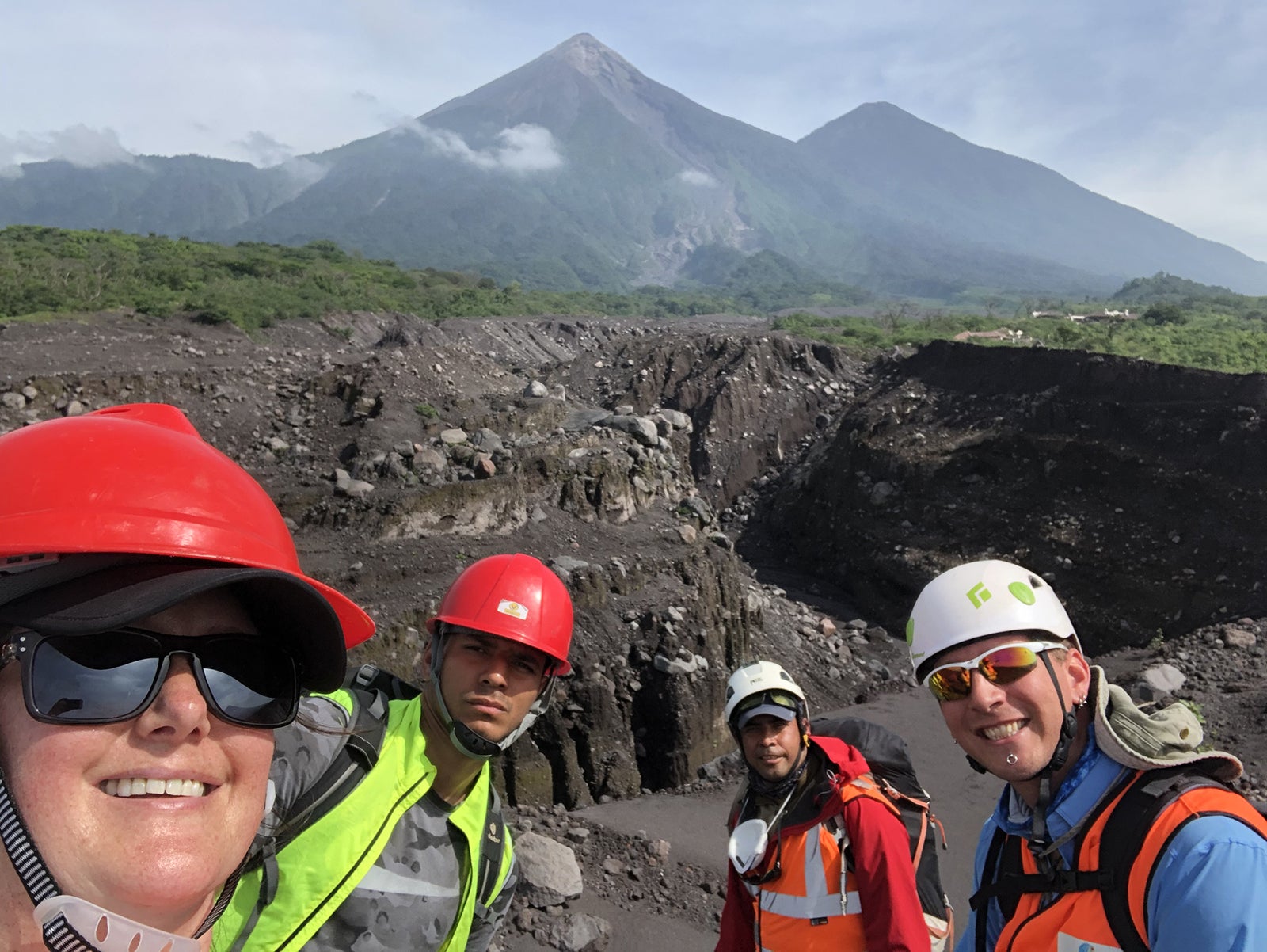
If you find yourself marveling at footage of volcanic eruptions and molten lava, you are not alone. According to Boise State geosciences graduate student Ashley Bosa, “When you sit and watch a volcano lava fountaining or hear a large ‘boom’ from an ash plume erupting from the crater, you get an incredible sense of wonderment.”
Alongside her advisor, geosciences associate professor Jeffrey Johnson, her Boise State peers Jerry Mock and Tamara Satterwhite, Guatemalan colleagues, and researchers from Michigan Technological University, Bosa conducts research using infrasound to study rain-triggered volcanic mudflows in Guatemala.
Infrasound is a low-frequency sound below the threshold of human hearing produced by mudflows and other volcanic processes. Specialized sensors located far from a hazard zone can detect it. The infrasound lab at Boise State builds, calibrates, and installs specialized sensors at volcanoes all over the world.
“While there are many volcanoes that produce volcanic mudflows in many ways, our methods to detect them in time for evacuations and other hazard mitigations are limited,” Bosa said. “We are working to improve the monitoring capabilities to detect these mudflows and facilitate our understanding of their flow behaviors in greater detail.”
Johnson has worked in Guatemala for nearly 20 years. A grant from the National Science Foundation has supported the development of these new monitoring strategies.
“Our partners in Guatemala are the experts in monitoring volcanos. They maintain monitoring instrumentation, partner in the analysis of the data, and collaborate in all aspects of the field effort,” Johnson said.
Bosa said that in addition to the wonderment she finds in the science of volcanoes as a “window into the inner workings of Earth,” she also feels motivated by the engagement in hazard mitigation research that may save lives.